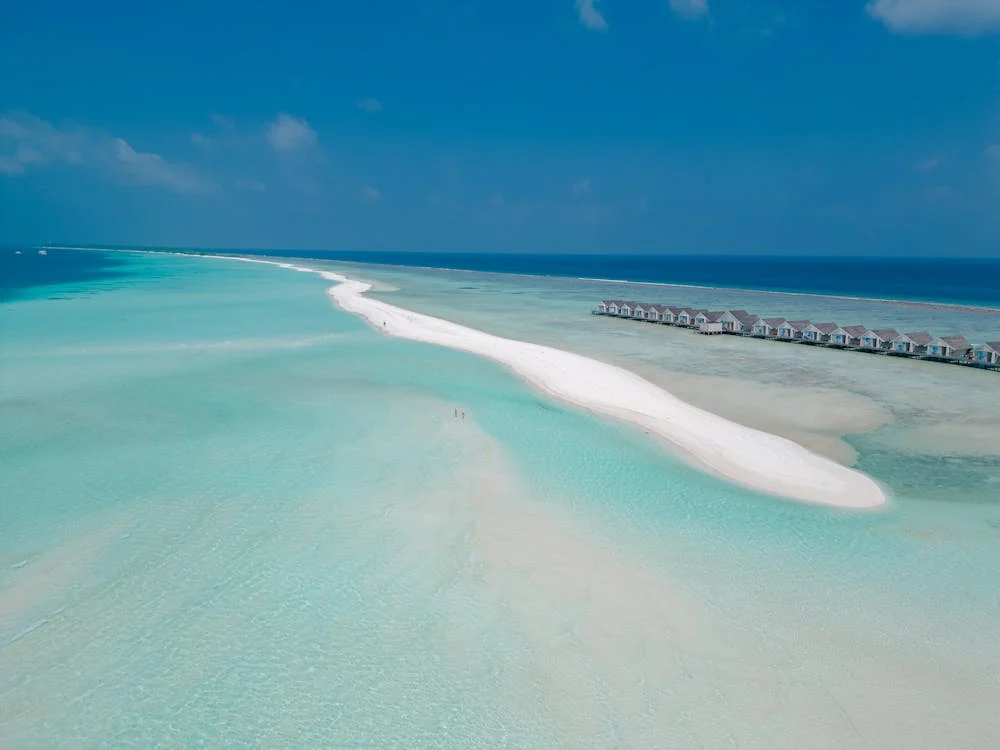Imagine this: powdery white sand between your toes, crystal-clear waters stretching into endless blue, and the sun warming your skin as you float without a care in the world. That’s not just a postcard—it’s what the Maldives feels like. 💦🌴 But even paradise has seasons.
Choosing the best time to visit the Maldives isn’t just about the weather—it’s about crafting the trip that matches your vibe, your budget, and your dream experience. Want cloudless skies for honeymoon photos? Or peaceful resorts at half the price?
This guide will help you decode it all.
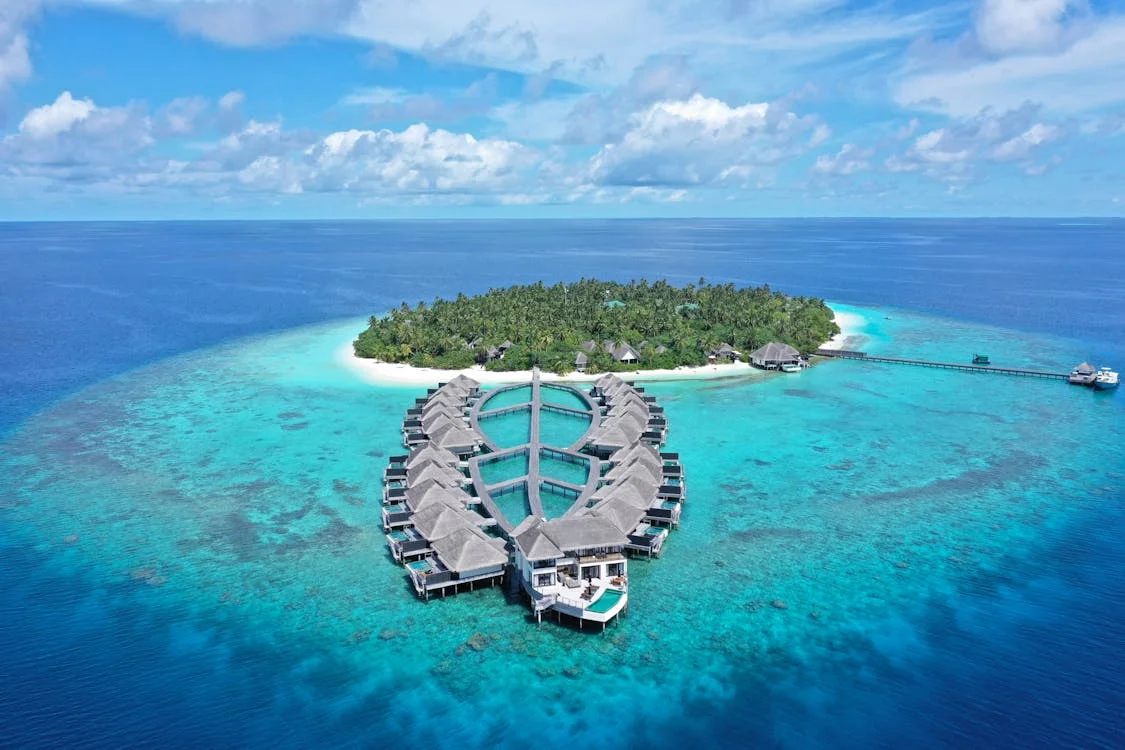
Image: Aerial view of overwater bungalows on turquoise Maldivian waters
The Maldives is the perfect place to unwind and connect with nature. It’s a slice of paradise.
Gwyneth Paltrow
We’ll walk you through:
- ✅ Monthly weather patterns (rainy vs. dry season)
- ✅ Crowd levels and price trends
- ✅ Best months for diving, snorkeling & budget travel
- ✅ Insider travel tips to make the most of your trip
So whether you’re planning a romantic escape, underwater adventure, or just some much-needed vitamin sea in 2025, you’re in the right place.
🧭 Let’s find your perfect moment in the Maldives—because a place this magical deserves the timing to match.
I. Understanding Maldives Climate: The Two Distinct Seasons
Planning the best time to visit the Maldives starts with understanding how this island nation’s tropical climate actually works. While it may look like paradise year-round (and honestly, it kind of is), the Maldives experiences two very different seasons that can impact everything from underwater visibility to how much you’ll pay for your overwater bungalow.
Knowing the difference between the dry and wet seasons will help you choose the version of the Maldives that fits your travel style—whether you’re chasing blue skies and luxury vibes, or looking for quieter beaches and better deals.
Let’s begin with the season that delivers everything you’ve seen in those dreamy postcards—the Maldives dry season.
Maldives Dry Season (November to April): Prime Time for Beach Lovers
If you’re chasing that classic Maldives fantasy—turquoise lagoons, white-sand beaches, and not a cloud in the sky—this is your golden window. The dry season, running from November to April, is widely considered the best time to visit. It’s the Maldives at its brightest and most breathtaking.
Expect warm, consistent sunshine with daytime temperatures hovering between 25°C and 31°C (77°F–88°F). Humidity is relatively low, the breeze is gentle, and the sea? As smooth as glass. This is also when underwater visibility is at its best, perfect for snorkeling, diving, or just floating in reef-filled wonder.
The driest months—January through March—deliver the most dependable weather. February, in particular, is often the sunniest month of the year. Naturally, this also marks peak travel season, with holiday crowds arriving for Christmas, New Year, and Easter escapes. That means higher prices, busier resorts, and limited availability if you wait too long to book.
But for many travelers, it’s absolutely worth it. From morning swims in calm, crystal-clear water to candlelit dinners on the beach with a sunset backdrop—it’s hard to beat the dry season’s charm.
💡 Tip: Book at least 3–6 months in advance if you’re traveling during the holidays or planning a honeymoon.
And don’t forget—staying connected in the Maldives can be tricky, especially on private islands where Wi-Fi might be spotty. A Gohub eSIM gives you instant internet as soon as you land, so you can access maps, book excursions, or post that dreamy villa pic—all without worrying about roaming fees or finding a SIM shop.
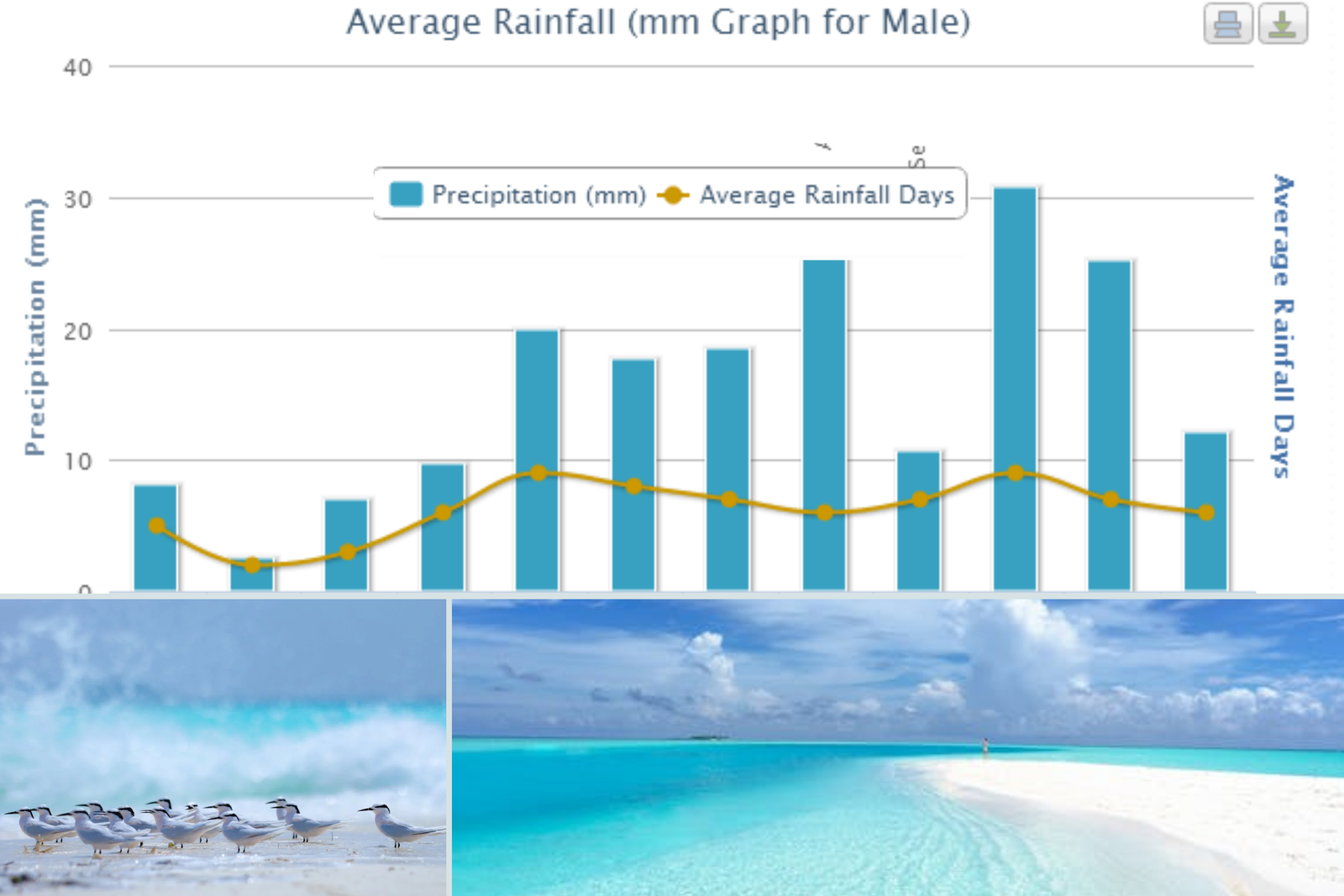
Image: Weather comparison chart showing rainfall across Maldives seasons
🌴 What Makes the Dry Season So Special?
- ✅ Sun All Day, Every Day: You’ll get up to 9 hours of sunshine daily—plenty of time for snorkeling, sipping cocktails by the water, or simply turning your phone on airplane mode and doing nothing (except tanning, of course).
- ✅ Perfect Tropical Temperatures: Daytime highs hover between 25°C and 31°C (77°F–88°F). Evenings are warm and breezy—no sweaters needed, just a light wrap and a chilled drink.
- ✅ Low Humidity = High Comfort: Unlike the steamy wet season, the dry months feel fresh and breezy, ideal for romantic strolls and outdoor dinners on the sand.
- ✅ Crystal-Clear Water: This is peak underwater visibility, making it the best time for diving, snorkeling, and underwater photography. Expect glass-like seas and reef scenes straight out of National Geographic.
- ✅ Calm & Inviting Oceans: With gentle waves and glassy lagoons, this is paradise for paddleboarding, kayaking, and swimming with manta rays.
Maldives Monsoon Season (May to October): Hidden Advantages
The Maldives monsoon season, also called the southwest monsoon, lasts from May to October. It’s the official rainy season in the Maldives, and while many travelers avoid it, this time of year has some surprising benefits—especially if you’re looking for a more affordable and peaceful trip.
It’s true that rainfall increases during these months, and the humidity is higher. But the weather is rarely gloomy all day. Most rain comes in short, heavy showers that clear up quickly. Many days still offer sunshine, warm temperatures, and calm moments by the beach. Average temperatures stay between 27°C and 30°C (81°F–86°F)—great for swimming, diving, or relaxing.
For some travelers, this can still be the best time to visit the Maldives, depending on your priorities.
Why visit during the Maldives monsoon season?
- ✅ Cheaper prices: Flights and resort rates drop significantly—up to 40–50% off
- ✅ Fewer crowds: More space, more peace, and better availability for activities
- ✅ Lush nature: Rain brings out the greenery and makes the islands feel more alive
- ✅ Marine life: June to September is the best time to see manta rays and whale sharks
- ✅ Best surfing season: The waves are bigger—ideal for surfers in spots like Central Atolls
Of course, there are trade-offs. Some excursions may get delayed due to weather. And sunsets might not be as picture-perfect every day. But if you’re flexible and don’t mind a few passing showers, this season can offer great value.
💡 Tip: If you’re planning to dive, snorkel, or surf, the monsoon season might actually be your best option.
And to make your trip smoother, stay connected with a Gohub eSIM. Internet on remote islands can be slow or unstable. With Gohub, you get fast, reliable mobile data as soon as you land—so you can check the forecast, change plans if needed, or book a manta ray tour last-minute without hassle.
🌊 Looking for an Insta-worthy stay? Check out the best overwater resorts in the Maldives for serious travel goals.
II. Maldives Weather By Month: A Detailed Breakdown
Wondering when exactly to go? Here’s your detailed guide to Maldives weather by month, so you can choose the best time to visit the Maldives based on sunshine, sea conditions, crowds, and cost.
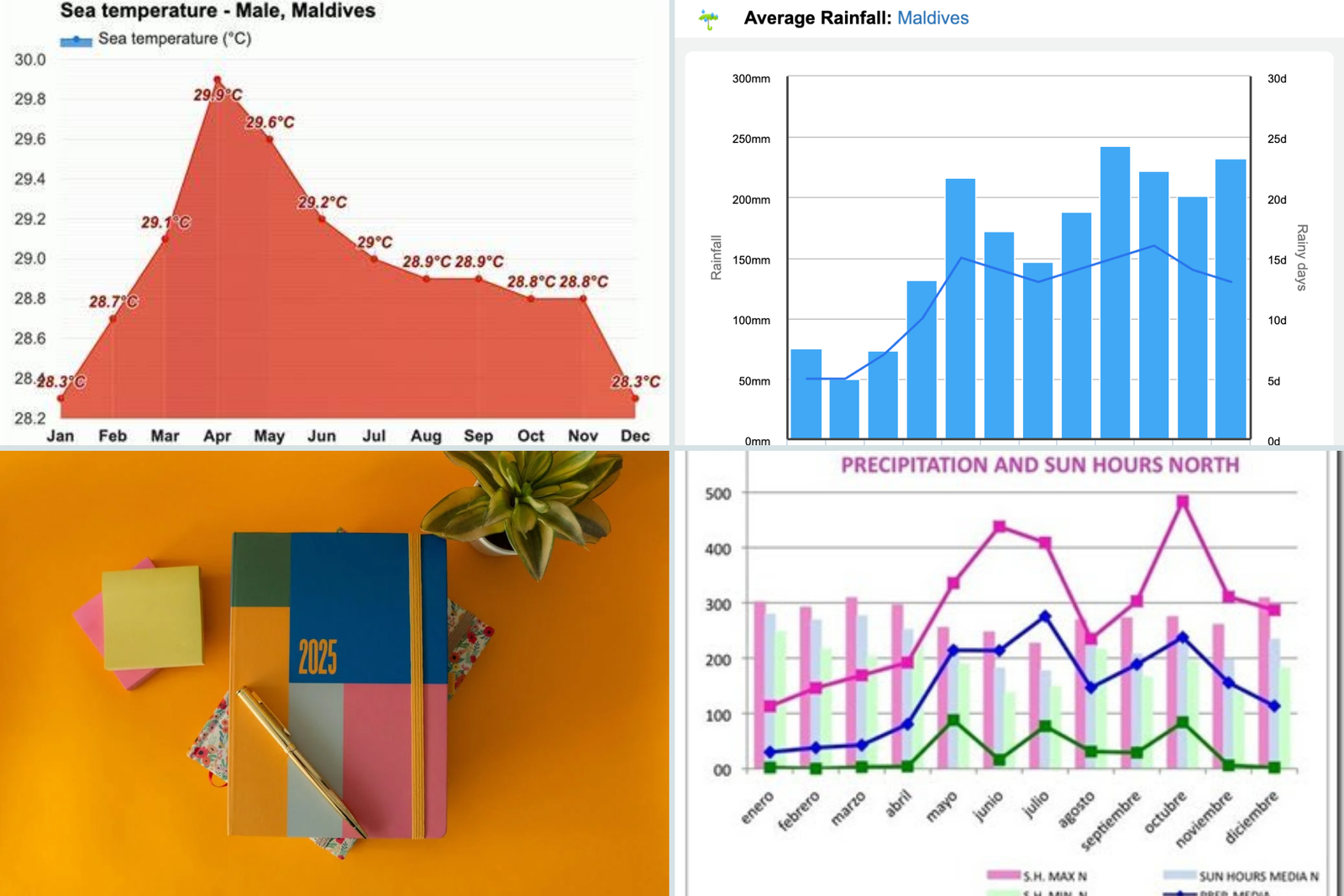
Image: Monthly calendar highlighting optimal weather periods in the Maldives
To help you pinpoint the best time to visit the Maldives for your specific preferences, here’s a comprehensive month-by-month breakdown of what to expect:
January to March: Peak Perfection
The year kicks off with some of the best weather the Maldives has to offer. If you’re craving crystal-clear skies, calm seas, and that classic postcard-perfect experience, this is it.
January falls right in the middle of the dry season. Days are sunny and breezy, with low humidity and temperatures hovering around 27°C (81°F). The ocean stays beautifully warm at 28°C (82°F)—perfect for swimming, kayaking, or long, lazy snorkeling sessions. This is also peak tourist season in the Maldives, so expect higher prices and busier resorts. Booking ahead is key.
February is often ranked as the absolute best time to visit the Maldives. It’s the driest month of the year, offering maximum sunshine, minimal rainfall, and excellent water conditions. The north-eastern monsoon brings light, cooling winds and helps keep the skies clear while the seas stay calm. Ideal for everything from beach lounging to scuba diving.
March continues the winning streak with more bright days and stunning underwater visibility. Humidity starts to increase slightly by the end of the month, but it’s still very comfortable. Tourist numbers begin to taper off a little, which means you might catch a few better accommodation deals without sacrificing weather quality.
🌊 If snorkeling and diving in the Maldives is high on your list, this three-month window offers some of the clearest water and calmest seas all year.
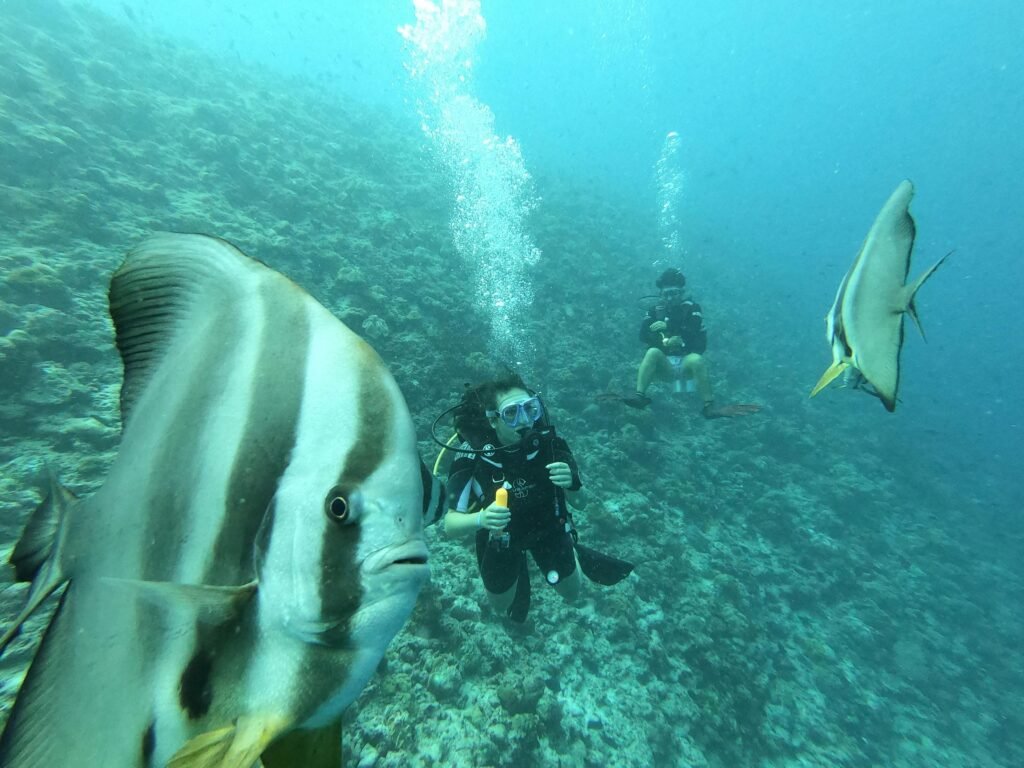
Image: Snorkeling in the Maldives
April to June: Transition and Early Monsoon
April marks the turning point between the dry and wet seasons. The first half of the month usually holds onto the clear skies and calm waters of peak season, while the second half may bring a few more clouds and the occasional tropical shower. It’s what many call a “sweet spot”—less crowded, still beautiful, and more affordable.
This makes April a great time for travelers who want solid weather without the premium price tag. You’ll still enjoy warm days and clear water, but with fewer tourists and better deals—especially if you travel mid- to late-month.
In May, the Maldives monsoon season officially begins. Rainfall and humidity increase, but it rarely rains all day. You might experience a brief downpour followed by bright sunshine—classic tropical rhythm. This month also kicks off the best time for surfing in Maldives, particularly around the northern and central atolls, where bigger swells begin to roll in.
May is also the start of the Maldives low season, which means:
- Liveaboard diving trips at discounted rates
- Lower flight and hotel prices
- More availability at top resorts

June continues the wet season pattern with more frequent rain and humidity, though temperatures remain warm—around 29°C (84°F). While underwater visibility decreases slightly, this month is incredible for marine life, thanks to plankton blooms that attract manta rays and whale sharks in large numbers.
📸 Bonus for photographers: The extra moisture in the air can lead to some truly dramatic sunset skies—think fiery colors over calm water.
For flexible travelers who don’t mind the occasional rain, this period offers great value and a wilder, more nature-filled side of the Maldives.
July to September: Monsoon in Full Swing
From July through September, the Maldives monsoon season reaches its fullest. These months bring the highest chance of rain and cloud cover—but also some of the best deals of the year. If you’re flexible and don’t mind a little unpredictability, this can be the cheapest time to visit the Maldives without missing out on warm waters and tropical charm.
July is right in the middle of the wet season. Yes, it’s statistically wetter, but rain usually comes in short bursts. Most days still offer sunshine between showers. For surfers, this month is a dream: surfing in the Maldives peaks in July, especially along the eastern reef breaks of the central and northern atolls. And if you’re in Malé around July 26th, you’ll catch Independence Day celebrations—a rare chance to experience local culture and festivities.
Surprisingly, many travelers who visit in August report plenty of sunshine, especially in the mornings and early afternoons.
August follows a similar rhythm:
- Fewer tourists = peaceful island time
- Occasional downpours, but not constant
- Air temps around 28°C (82°F)
- Water stays warm at 29°C (84°F)
September, on the other hand, is usually the wettest month of the year. That means even lower prices—but also more frequent rain and overcast skies. It’s not the best time for diving or island-hopping, but for travelers seeking seclusion, savings, and spa days, it can be ideal.
September also plays host to Festival LUX Underwater*, a niche event with underwater art, music, and reef-based installations—perfect for those looking for something unique, even if it means packing a poncho.
☔ Tip: Bring lightweight rain gear and a waterproof bag for your phone or camera. And have a few indoor activities in mind, just in case.

October to December: Return to Sunshine
October is the start of the transition back to the Maldives dry season. Rain is still possible, but it’s usually less frequent than in September. You’ll start to notice more sunshine and calmer seas, which makes this a great time to visit if you want better weather without high-season prices. It’s also a good month for whale shark sightings, especially in the southern atolls.
November brings more stable weather. The skies are clearer, humidity drops, and water visibility improves. This is the official start of the dry season, and one of the best times to visit the Maldives if you want a balance between good weather and affordable prices. Snorkeling and diving conditions also become much better.
By December, the dry season is fully back. The first half of the month still offers some value, but from mid-December onward—especially around Christmas and New Year—prices rise sharply. It’s a popular time to visit, so resorts fill up quickly. That said, the weather is excellent, with long sunny days and very little rain.
💡 Tip: If you’re planning to travel in late December, book at least 4–6 months in advance to get the best options.
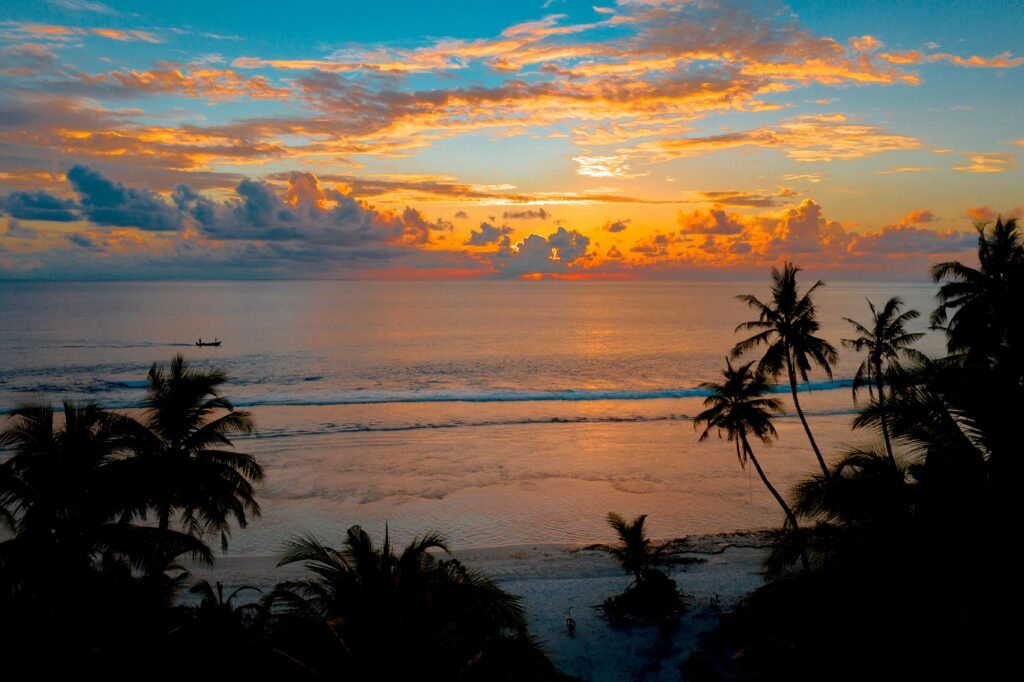
December delivers the full return of dry season conditions with abundant sunshine and minimal rainfall. The first half of the month offers relatively good value, while the second half sees prices spike for the holiday period. Christmas and New Year in the Maldives are magical but come with premium pricing and require booking months in advance.
🌴 Planning a tropical tour? After the Maldives, find out the best time to visit Bali so you can soak up the sun and skip the crowds.
III. Beyond the Seasons: Optimizing Your Visit for Specific Goals
While Maldives weather patterns play a big role in travel planning, the best time to visit the Maldives also depends on what you’re looking for—whether it’s budget travel, world-class diving, big surf, or a romantic escape. Each goal has its own ideal window, and choosing the right one can turn a good trip into an unforgettable one.
Let’s break it down by travel style:
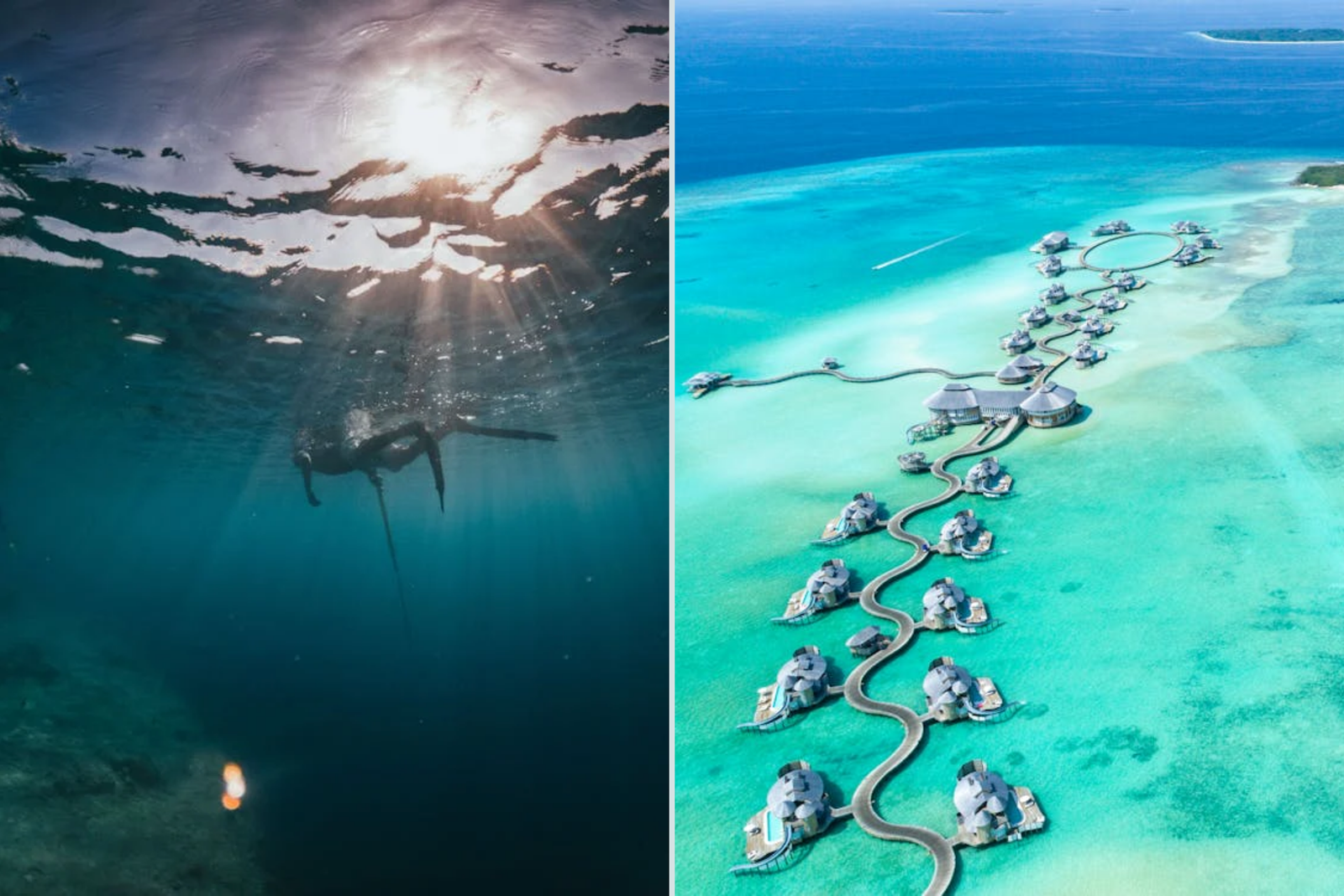
Image: Split view showing underwater marine life and above-water resort experience
💸 For Budget-Conscious Travelers
While the Maldives dry season is perfect for weather, it’s not always ideal for your wallet. If you’re looking to enjoy this island paradise without spending a fortune, timing is everything.
The best time to visit the Maldives on a budget is usually outside of the high season. That doesn’t mean sacrificing your experience—it just means planning smart.
Here’s how to save without missing out:
- Travel during shoulder months like late April or early November. You’ll get better prices while still enjoying mostly dry, sunny weather.
- Consider the Maldives low season (May to September). Yes, there’s more rain—but it often comes in short bursts, and many days still have sun.
- Swap private resorts for guesthouses on local islands. They offer comfortable stays at a fraction of the price, with more local charm.
- Keep an eye out for flash sales or last-minute deals. Many resorts drop prices during monsoon months to fill empty rooms—especially if you’re flexible.
Even during the Maldives monsoon season, you’ll likely enjoy warm weather, clear mornings, and beautiful sunsets. The rain doesn’t last all day, and the savings can be significant—sometimes 30–50% off regular prices.
💡 Tip: Traveling during low season also means fewer crowds, quieter beaches, and more room to explore at your own pace.
For Water Sports Enthusiasts
If you’re coming to the Maldives for more than just sunbathing, you’re in luck—the islands offer incredible water activities year-round. But the timing can make a big difference, depending on what you’re planning to do.
- Snorkeling and diving: The Maldives dry season (December to April) offers the best visibility, often exceeding 30 meters
- Surfing: The Maldives monsoon season (May to October) brings bigger waves and better swells
- Big game fishing: November to April is ideal for catching sailfish, marlin, and tuna
- Kitesurfing: May to October provides consistent winds, particularly on the eastern sides of the atolls
💡 Interesting note: While the eastern side of the Maldives offers better visibility during the dry season, the western side often has clearer diving conditions between May and November, especially during plankton-rich months that attract manta rays.
For Wildlife Encounters
he Maldives is one of the best places in the world for close-up marine life experiences. But to catch the highlights—like swimming with manta rays or spotting whale sharks—you’ll want to visit at the right time.
The Maldives monsoon season (May to November) is the best time for most big wildlife sightings. Although this is the rainy season, the ocean becomes full of plankton, attracting larger species.
Here’s what to expect:
- Whale sharks: Best chance from May to November, especially in October and November in the southern atolls
- Manta rays: Peak season is also May to November, with huge numbers seen at Hanifaru Bay in Baa Atoll
- Dolphins: Can be seen all year, but are easier to spot during calm, sunny days in the dry season
- Turtle hatching: Happens mostly between February and April
💡 Tip: If you’re visiting Hanifaru Bay for manta rays, check the local rules in advance—entry is limited to protect the reef.
Whether you’re diving or snorkeling, the best time to visit the Maldives for marine life depends on what you want to see—but no matter the season, the ocean here always has something magical to offer.
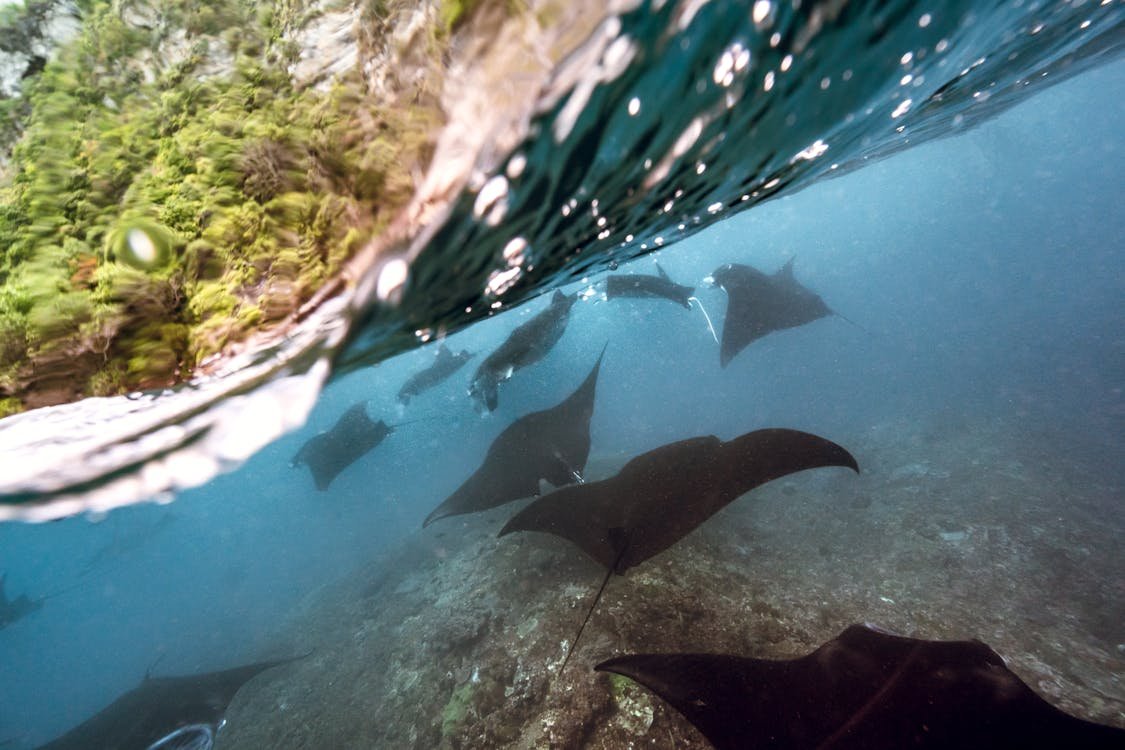
Image: Diver swimming alongside a majestic manta ray in Maldivian waters
For Avoiding Crowds
f you’re dreaming of a quiet beach with no one else around, the Maldives can still offer that—if you plan your timing and location right. Even during high season, there are smart ways to avoid the rush.
Here are a few simple strategies:
- Travel midweek: Avoid weekends—Tuesday to Thursday often see fewer arrivals, even in peak season
- Pick remote atolls: The farther you are from Malé, the fewer tourists you’ll see. Look at atolls like Gaafu Dhaalu or Noonu
- Visit during Ramadan: On local islands, the number of foreign tourists drops. Just note that some restaurants and services may be limited
- Skip major holidays: Christmas, New Year, Chinese New Year, and Easter are the busiest times—prices soar and resorts fill fast
💡 Tip: If seclusion is your top priority, look for small boutique resorts or guesthouses with limited rooms on outer islands.
This approach lets you enjoy the Maldives at a slower pace, with fewer people and more peace—just the way many travelers prefer it.
💎 Still exploring options? Discover top luxury resorts worldwide beyond just the Maldives.
IV. Practical Travel Planning: Making the Most of Your Visit
Knowing the best time to visit the Maldives is just one part of the planning puzzle. Another important factor is understanding how the country’s geography affects your trip—especially when choosing which atoll or island to stay on.

Image: Person planning Maldives trip with calendar, map, and travel guides
The Maldives is made up of 26 atolls spread over hundreds of kilometers, and conditions can vary depending on where you go. While the differences are small, they can impact your experience, especially if you’re coming for specific activities like surfing, diving, or simply looking for fewer crowds.
Geographic Considerations
The Maldives spans a large area with some regional variations:
- Northern atolls typically receive slightly less rainfall than southern ones
- Southern atolls often have better surfing conditions during the monsoon season
- Central atolls (near Malé) tend to be more crowded regardless of season
- Eastern sides of atolls experience stronger winds during the southwest monsoon
- Western sides offer better protection during the monsoon season
Accommodation Strategies
Maximize value with these booking approaches:
- Book 6-9 months ahead for dry season visits, especially for popular resorts
- Look for last-minute deals during the wet season
- Consider half-board or full-board options to control food costs
- Research transfer costs carefully—seaplane transfers can add $500+ per person
- Compare weekday vs. weekend rates, as some resorts offer weekday discounts
Connectivity Solutions for Travelers
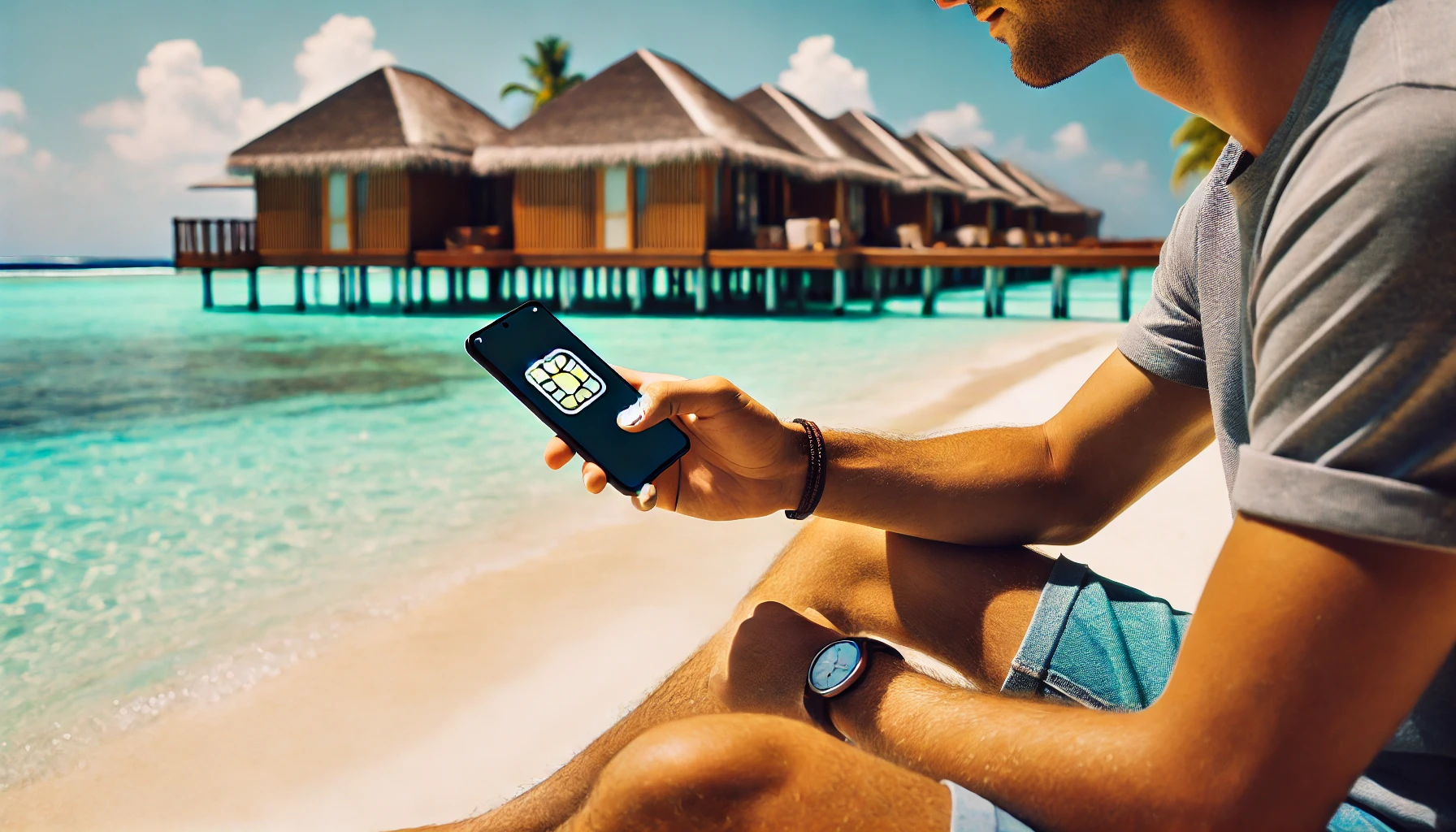
Image: Person using smartphone on a Maldivian beach with resort in background
Staying connected in the Maldives is essential for sharing those perfect beach photos and maintaining contact with loved ones:
- Resort Wi-Fi: Quality varies dramatically between properties
- Local SIM cards: Available but can be expensive and limited
- eSIM solutions: Services like Gohub offer convenient, instant activation with coverage throughout the Maldives
- Offline planning: Download maps, translation tools, and entertainment before arrival
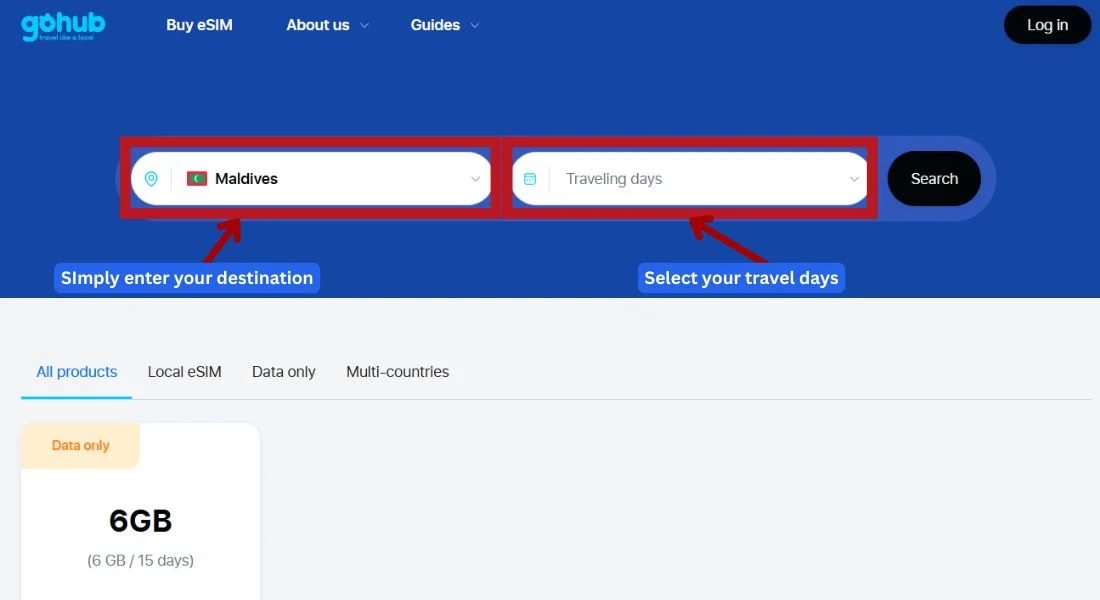
Image: How to choose a destination and travel days to view Maldives data plans
An eSIM from Gohub provides reliable connectivity without the hassle of finding a local provider or paying excessive roaming fees—particularly valuable when island hopping or staying on more remote atolls.
📊 Not sure how much mobile data to buy? Here’s how to estimate your travel data needs so you don’t overspend.
Packing Essentials by Season

Image: Suitcase with essential items for a Maldives vacation
Adjust your packing list based on when you visit:
Dry Season Essentials:
- High SPF sunscreen (reef-safe)
- After-sun cooling gel
- Wide-brimmed hat and sunglasses
- Light, breathable clothing
- Rash guard for snorkeling
Monsoon Season Additions:
- Light rain jacket or poncho
- Waterproof phone case
- Extra swimwear for quick changes
- Anti-humidity hair products
- Waterproof bag for electronics
V. Conclusion: Choosing Your Perfect Maldivian Paradise Window
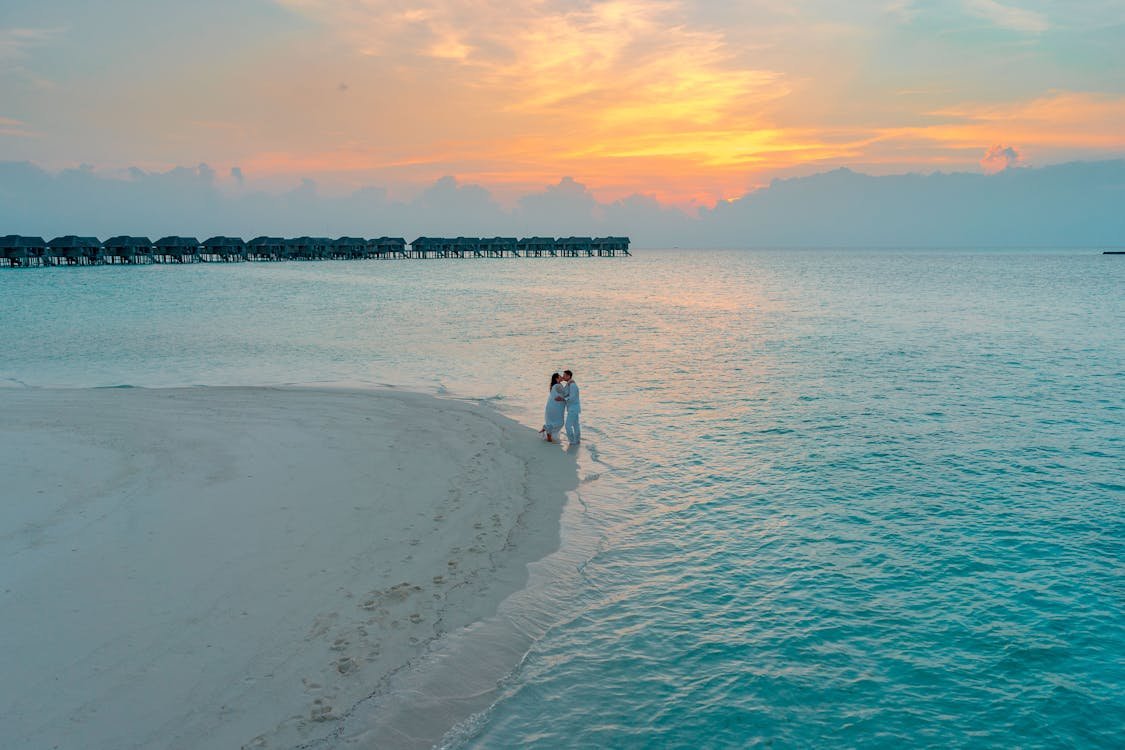
Image: Sunset over water villas with couple enjoying the view
The Maldives is beautiful in every season—but the best time to visit the Maldives depends on what matters most to you.
If you’re after sunshine, calm seas, and postcard-perfect skies, the dry season from December to April is ideal. For others, the cheapest time to visit Maldives might be even more appealing—especially between May and November, when prices drop and wildlife activity peaks during the Maldives monsoon season.
By planning around your travel goals—whether it’s surfing, snorkeling, romance, or relaxation—you’ll be able to enjoy the Maldives your way.
And wherever your trip takes you, don’t forget to stay connected. With a Maldives eSIM from Gohub, you get fast, reliable internet from the moment you land. Skip the SIM card hassle, avoid roaming fees, and enjoy seamless access to maps, weather, booking apps, and more—whether you’re relaxing in an overwater villa or exploring a quiet local island.
✈️ So… when’s your perfect time? Plan smart, stay connected, and let the Maldives take care of the rest.


